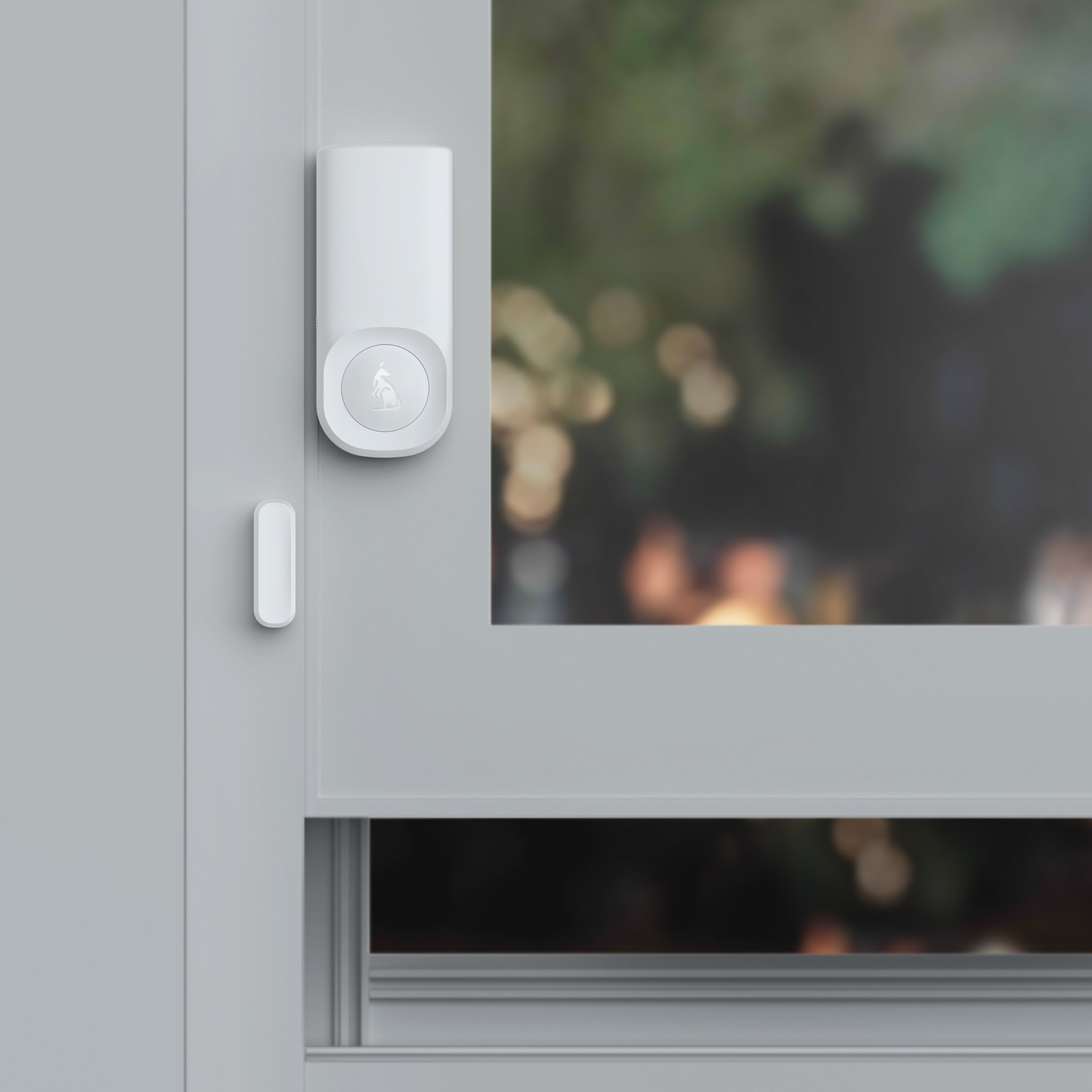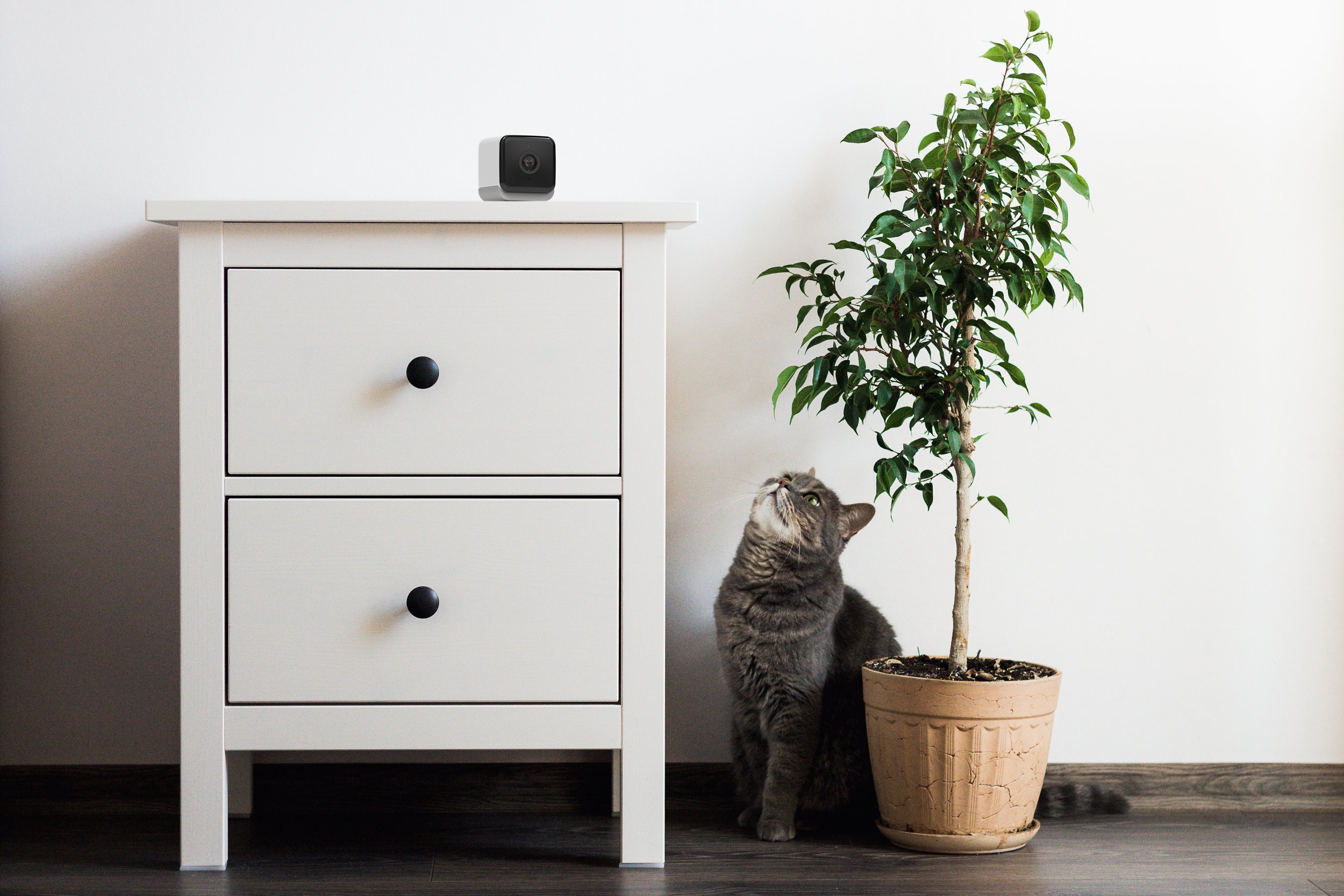Understanding Motion Detectors: the Role of Sensor Triggers
Motion sensor technology has revolutionized the way we secure our homes, providing an essential layer of protection against intruders. Let's delve into what a motion sensor is, how it works, and its historical development. We'll also highlight the Kangaroo Indoor+Outdoor Camera, an innovative device that exemplifies modern motion sensor capabilities.
Takeaway
Are you making the most of motion sensors in your home security setup? Devices like the Kangaroo Indoor+Outdoor Camera leverage cutting-edge motion detection features to keep your property secure 24/7. Let’s explore how these tools work and why they’re essential for protecting your space.
What is a Motion Sensor?
A motion sensor is an electronic device designed to detect movement within a specified area. When triggered, it can activate alarms, lights, or even security cameras to alert homeowners to potential threats. These devices are integral to modern security systems, ensuring real-time monitoring and intrusion detection.
Motion Detectors vs. Window Sensors: Complementary Tools
When securing your home, it’s important to understand the difference between motion detectors and window sensors:
Window Sensors
Detect specific events, such as the opening of windows or glass breakage.
Provide immediate alerts when an entry point is breached.
Ideal for securing doors and windows.
Motion Detectors
Detect general movement within a space.
Cover wide areas, such as hallways, rooms, or outdoor zones.
Trigger alarms or activate cameras to monitor activity.
Which Should You Choose?
Both! For best results, use window sensors to secure entry points and motion detectors to monitor larger spaces. Together, they create a layered security network that leaves no gaps.
How Do Motion Sensors Work?
The most common type of motion sensor used in home security is the Passive Infrared (PIR) sensor. PIR sensors detect changes in infrared energy levels. All objects with a heat signature emit infrared radiation, and a PIR sensor measures this radiation. When a warm object, like a person or animal, moves across the sensor's field of view, it triggers a change in the infrared energy pattern, activating the sensor.
Fun Fact
PIR sensors are widely used because they’re reliable and have a low false alarm rate, making them perfect for home security.
Types of Motion Sensors
Passive Infrared (PIR) Sensors: These detect heat emitted by living beings, sensing infrared light (heat) changes. When a heat source moves, the sensor triggers an alert. PIR sensors are common in home security due to their reliability and low false alarm rate.
Ultrasonic Sensors: These emit sound waves and measure the reflection off an object. Movement alters the reflection pattern, triggering the sensor. While effective, they can be susceptible to false alarms from environmental noise.
Microwave Sensors: These emit microwave pulses and measure their reflection off objects. They cover larger areas than PIR sensors but are more prone to interference.
Tomographic Sensors: These use radio waves to create a mesh network. Movement within this network disrupts the waves, triggering an alert. They are less common in homes but effective in large, open areas.
Vibration Sensors: These detect physical vibrations caused by movement, often used with other sensor types for comprehensive security.
Types of Sensors: A Quick Comparison
| Sensor Type | How It Works | Best For |
|---|---|---|
| PIR Sensors / Infrared Sensors | Detect heat changes from living beings | Indoor spaces, minimal false alarms |
| Ultrasonic Sensors | Emit sound waves and measure reflections | Small indoor areas |
| Microwave Sensors | Emit microwave pulses to detect movement | Large outdoor spaces |
| Tomographic Sensors | Use radio waves to create a detection network | Warehouses, open spaces |
| Vibration Sensors | Detect physical vibrations from movement | Windows or sensitive areas |
A Brief History of Motion Sensors
The first motion detectors were invented in the early 20th century, primarily for use in burglar alarms. These early devices used a variety of technologies, including photoelectric cells and ultrasonic sensors. The invention of the PIR sensor in the 1970s revolutionized motion detection, making it more affordable and reliable for home security systems.
Motion Sensors in Modern Home Security Systems
Today's home security systems heavily rely on motion sensors (motion detectors) to provide real-time alerts and monitoring. These sensors can be integrated with security cameras, door and window sensors, and alarm systems to create a robust security network.
Benefits of Motion Sensors in Home Security
Intruder Detection: Motion sensors can detect unauthorized movement and trigger alarms, deterring intruders.
False Alarm Reduction: Modern sensors are designed to minimize false alarms by distinguishing between different types of motion and environmental changes.
Enhanced Monitoring: Motion sensors can activate security cameras and lights, providing real-time footage and improving visibility in low-light conditions.
Smart Home Integration: Motion sensors can be integrated with smart home systems, allowing homeowners to monitor their property remotely and receive alerts on their smartphones.
Reducing False Alarms in Motion Sensors
False alarms are a common challenge with motion detectors. Understanding their causes can help you minimize unnecessary triggers:
Pets: Pets moving in the detection area can set off sensors. Consider using pet-immune motion detectors to avoid this.
Temperature Changes: Rapid shifts in temperature, such as from heating vents or sunlight, can cause false triggers in PIR sensors.
Moving Curtains or Blinds: Drafts or air conditioning can move objects within a sensor’s field of view, causing false alarms.
External Vibrations: Vibrations from heavy machinery or traffic can activate vibration-based sensors.
Factors Influencing Motion Detector Sensitivity
Motion detectors can be triggered by several factors, including:
Human Movement: A person walking through a sensor’s field of view will activate it.
Animals: Pets or wildlife can trigger outdoor motion detectors.
Objects: Balloons, moving plants, or objects blown by the wind may set off alarms.
Environmental Changes: Sudden light or heat variations, such as reflections from windows, can cause false triggers.
How to Improve Sensitivity:
Place motion detectors strategically and adjust their sensitivity settings to reduce false alarms while ensuring effective detection
Motion Sensors in Modern Home Security Systems
According to a report by the Security Industry Association, about 94% of home security systems installed in the United States in recent years include motion sensors as a key component of their setup . This high percentage underscores the critical role that motion sensors play in modern home security. Source: Security Industry Association. (2023). "2023 Home Security Trends and Insights." Security Industry Association
Spotlight: Kangaroo Indoor+Outdoor Camera
The Kangaroo Indoor+Outdoor Camera stands out as a prime example of how motion sensor technology is evolving to create more effective home security solutions. Combining high-quality video, versatile motion detection, and customizable features, this camera provides a comprehensive shield against potential intruders.
Crystal-Clear Video: The camera boasts a high-definition 1080p resolution, capturing crisp, detailed footage of your property day and night. This ensures that you won't miss any crucial details in the event of an incident.
Enhanced Night Vision: Thanks to its integrated IR cut filter, the Kangaroo camera excels in low-light conditions. Even in complete darkness, you can monitor your surroundings clearly, ensuring round-the-clock security.
Precision Motion Detection: With its customizable motion detection zones, you can tailor the camera's monitoring to your specific needs. Focus on entry points like doors and windows, or monitor high-traffic areas like your driveway. By eliminating unnecessary triggers, you'll receive alerts only for genuine threats, reducing false alarms.
Multi-Sensory Awareness: The Kangaroo camera isn't just about visuals. It also features sound detection, ensuring a more holistic approach to security. If an intruder attempts to break a window or force open a door, the camera will pick up the sound and alert you.
Intuitive Motion Tagging: The camera's motion tagging feature puts a visual box around any detected movement in the video feed. This makes it remarkably easy to pinpoint the exact location and nature of the movement, saving you valuable time when reviewing footage.
Personalized Deterrence: With the ability to record up to three custom alarm sounds, you can personalize your camera's response to intruders. Choose from pre-recorded messages or record your own voice to deter potential threats and assert your authority over your property.
Motion Sensor Myths: Can a Ghost Trigger a Motion Sensor?
A common myth is that ghosts or paranormal entities can trigger motion sensors. The truth is, most motion sensors, particularly passive infrared (PIR) sensors, are sensitive to changes in heat or movement. Since ghosts are not known to emit heat or cause physical disturbances, they are unlikely to trigger a motion sensor. However, environmental factors such as temperature changes, moving curtains, or vibrations could result in false alarms.
Final Takeaway: Enhancing Home Security with Motion Sensors
Motion sensors are an essential component of any home security system, offering reliable protection against intrusions. Devices like the Kangaroo Indoor+Outdoor Camera go above and beyond, combining high-definition video, night vision, and customizable detection zones to deliver unparalleled peace of mind.
With the right combination of sensors, cameras, and strategic placement, you can create a robust home security network that keeps your family and property safe. Ready to upgrade your home security? Explore motion sensor technology today!
Related Reads:
Peace of Mind on the GO: Kangaroo - Your Compact Security Camera
Security Cameras and Theft: Seeing Clearly, Recovering Quickly
Enhancing Your Home Safety: the Role of Motion Sensors







